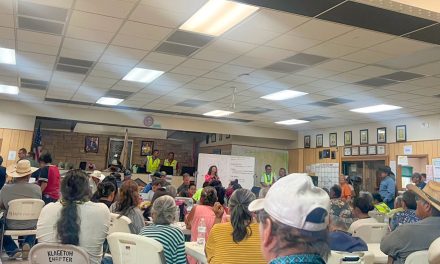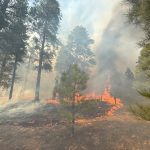
2nd round of hardship checks possible
WINDOW ROCK
On June 2, delegates Eugenia Charles-Newton and Vince James submitted a request for a bill to use American Rescue Plan Act funds to give every enrolled Diné adult $2,000 and every child $1,000 in hardship assistance.
Last fall, James and Charles-Newton also sponsored the resolution (CS-74-20) that funded the CARES Act Hardship Assistance Expenditure Plan, giving direct payments of $1,350 for adults and $450 for children, which paid almost $322 million to over 293,000 applicants.
During the Hardship Assistance application process, where enrollment was mandatory, the controller’s office and the Office of Vital Records updated the Nation’s membership from approximately 327,000 to 400,000.
This increase is especially significant now that it has positively impacted the first ARPA allocation of $1.86 billion to the Nation last week, which was based on tribal population data.
According to James, the new hardship assistance bill is being crafted by the Office of Legislative Counsel and is one of the first proposals in the pipeline to spend a portion of the $1.86 billion on direct assistance to the Navajo people.
“They are swamped,” he said. “We’ve heard many proposals from many departments throughout the Nation. We’re all submitting and dropping legislations so it all depends on when the legislation is ready in order to move forward with the process.”
A request for an update from Speaker Seth Damon on the status of ARPA planning and legislation was not responded to.
James said that the newly released ARPA spending guidelines are what led him and Charles-Newton to initiate the bill.
Assistance to individual households, small businesses, and nonprofits negatively impacted by the pandemic is also allowable under ARPA, as are pandemic-related infrastructure needs, and supplemental premium pay to employees who perform essential work.
Additionally, the number of applicants for the CARES Act Hardship Assistance indicated that a large number of Navajo people did need and benefit from the funds, which were used for various purposes.
“I received messages from many people who were very thankful for the hardship assistance and expressed how it helped them financially,” said James.
James said he received feedback from people who said they used their hardship payments to help install water lines, buy new generators, or solar panels and batteries to help with electricity at home.
Others, especially in urban areas, used the money to pay back bills like rent and utilities, and other living expenses.
Many people were very grateful to leadership, including the Council and president, for passing and signing off on the CARES Hardship Assistance legislation, he said.
There are other applicants who still haven’t received their hardship assistance checks, which could be related to inconsistencies with their CIB or other personal information, or where additional documentation is required, and still needs to be resolved, said James.
“I try my best to try and help these families,” he said.
James asked that the Navajo people pray for leadership to move forward in a positive manner with the ARPA fund spending decision.
“One point eight billion dollars is a lot of money to utilize within a short timeframe,” he said.
He said people can reach out to him and their delegates to share their thoughts about the hardship legislation.
Per the controller’s office website, as of June 9, the total of $714 million in CARES Act funds was budgeted to: hardship assistance ($341.7 million), public health (62.5 million), broadband/telecom ($53.9 million), payroll support ($42.1 million), powerline projects ($17.9 million), water projects ($39.3 million), solar projects ($12.9 million), economic development ($28.6 million), chapters ($28.1 million), gaming ($24.6 million), controller’s office ($16.3 million), personal protective equipment ($7.7 million), facilities maintenance ($6.5 million), and care packages ($6.2 million).
Any unspent funds in these areas were to be reverted back to the CARES Hardship Assistance Funds per Resolution CJY-67-20.
This leaves open the possibility that those who did not have the chance to apply for the CARES Hardship Assistance or were put on a waiting list might still be able to do so, but that would require additional legislation.
CARES Act monies have to be spent by the extended deadline of Dec. 31, 2021, and ARPA funds have to be spent by Dec. 31, 2024.
As a public service, the Navajo Times is making all coverage of the coronavirus pandemic fully available on its website. Please support the Times by subscribing.
How to protect yourself and others.
Why masks work. Which masks are best.
Resources for coronavirus assistance








 Highway 264,
Highway 264, I-40, WB @ Winslow
I-40, WB @ Winslow